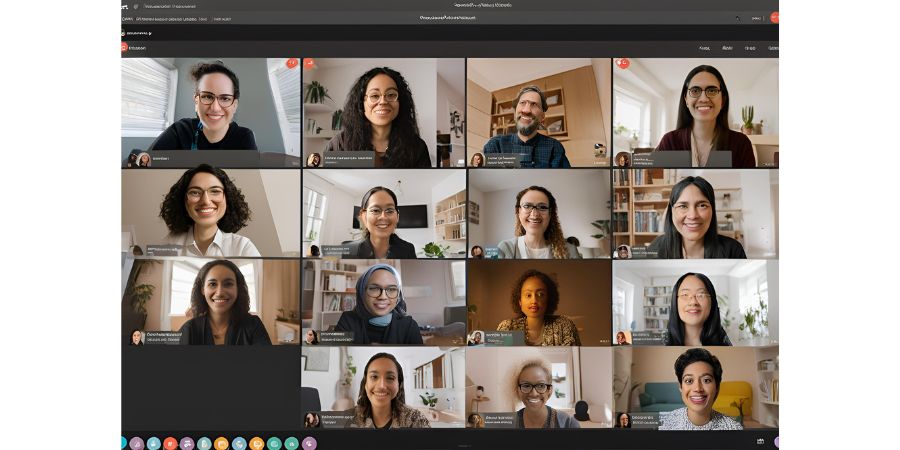The modern workplace has undergone significant transformations in recent years, especially with the rise of hybrid working models and the growing awareness of sustainability. As a result, executive fashion has evolved to reflect these changes, with a greater emphasis on practicality, comfort, and responsibility. No longer confined to rigid suits and ties, today’s executives are embracing a new era of fashion—one that merges professional attire with the flexibility required for a constantly changing work environment.
Understanding and catering to the specific needs and interests in executive fashion is crucial, particularly as it intersects with important trends like sustainability, technology-driven fabrics, and hybrid work environments. This article will explore these trends, emphasizing how executives can adapt their wardrobes to reflect these priorities, ensuring both leadership presence and personal style.
The Shift in Executive Fashion Trends
1. Hybrid Work’s Impact on Professional Attire
Hybrid work environments have dramatically shifted the expectations around professional attire. The traditional “business suit” is no longer the sole definition of executive wear. With many executives dividing their time between the office and remote settings, there is an increased demand for hybrid wardrobe options that strike a balance between comfort and professionalism.
Business-casual hybrids have emerged as a key trend, where executives can comfortably transition between virtual meetings, in-office days, and client visits. This trend has led to the rise of smart casual options—blazers paired with stylish knitwear or tailored pants with polished sneakers. Such versatile combinations not only adapt to varying work conditions but also maintain the necessary formality for leadership presence.
The flexibility of wardrobe choices now extends beyond office walls, allowing executives to navigate different environments with ease. The key is finding outfits that are polished yet comfortable, suitable for a range of scenarios without compromising professionalism.
2.The Role of Sustainability in Executive Fashion
Sustainability has emerged as a pivotal theme in executive fashion, driven by a growing societal awareness of climate change and resource depletion. The demand for eco-conscious materials is stronger than ever, with executives now seeking clothing made from organic cotton, recycled fabrics, and biodegradable options. These materials not only reflect a commitment to environmental responsibility but also align with the values of the modern workforce.
Furthermore, more and more fashion brands are championing ethical production processes and transparency. Today’s executives are more likely to choose companies that uphold fair labor practices, prioritize eco-friendly production methods, and have clear sustainability certifications. Ethical production processes that focus on reducing waste, conserving water, and lowering carbon emissions are becoming central to executive wardrobe decisions.
3. Technology-Driven Fabrics and Innovation
As technology continues to permeate every aspect of our lives, it’s no surprise that executive fashion is embracing technological innovations in fabric design. Smart fabrics, such as moisture-wicking, wrinkle-resistant, and odor-neutralizing materials, are gaining popularity due to their ability to combine high performance with sleek aesthetics. These fabrics allow executives to stay comfortable and presentable, no matter how hectic their schedule may be.
Additionally, the integration of wearable tech into clothing is expanding. Smart suits with embedded fitness trackers, temperature-regulating fabrics, and health-monitoring garments offer functionality beyond traditional attire. These innovations cater to executives who are looking for clothing that supports both their professional image and well-being, reflecting the growing intersection between technology, fashion, and leadership.
Addressing Specific Executive Needs
1. Leadership Presence through Style
One of the most significant aspects of executive fashion is its ability to enhance leadership presence. The right clothing can project confidence, authority, and professionalism—traits essential for executives looking to inspire and lead their teams effectively. Tailored designs and sharp silhouettes remain critical to exuding executive gravitas. Whether it’s a perfectly fitted blazer, a well-tailored dress, or trousers with precise seams, these details create a powerful visual impact.
Color psychology also plays an important role in leadership presence. Executives often choose colors that reflect power, trustworthiness, and professionalism. Navy, charcoal, and black are staples for their timeless appeal and psychological impact. For those seeking to make a bold statement, incorporating signature colors—such as deep red or royal blue—can enhance personal branding and boost confidence.
2. Gender-Inclusive Designs
Another important consideration in modern executive fashion is the shift toward gender inclusivity. The demand for gender-neutral executive attire is growing, reflecting broader societal changes toward acceptance and equality. Forward-thinking brands are embracing designs that cater to all genders, offering customizable options that suit diverse body types and personal preferences.
These inclusive designs allow executives to express their identity freely while maintaining the professionalism required for their roles. Whether it’s a unisex suit, adjustable waistbands, or flexible tailoring, gender-inclusive clothing options are crucial for empowering executives to feel comfortable in their professional attire, regardless of traditional gender norms.
3. Accessories that Amplify Leadership Presence
Accessories have always been an integral part of executive fashion, but their role is evolving. High-quality accessories—such as statement watches, minimalist bags, and subtle jewelry—can amplify an executive’s leadership presence. These pieces not only elevate an outfit but also convey a sense of attention to detail, sophistication, and authority.
Beyond traditional luxury accessories, functional accessories are also becoming more important. Tech-enabled briefcases, sustainable leather goods, and multitasking backpacks are rising in popularity, offering practical solutions for the modern executive. These items combine style with purpose, allowing executives to carry their technology, documents, and personal items with ease while maintaining a professional image.
Practical Tips for Executives
1. Curating a Versatile Wardrobe
To stay ahead in the ever-evolving world of executive fashion, curating a versatile wardrobe is key. Essential staples include tailored blazers, versatile trousers, hybrid-friendly footwear, and stylish knitwear. These pieces can be mixed and matched to create multiple outfits suitable for different occasions, from virtual meetings to boardroom presentations.
Balancing investment in classic pieces with trendy elements is essential. While timeless clothing items never go out of style, experimenting with more contemporary fabrics, colors, and cuts can help executives stay current. Finding the right balance between classic and trendy ensures that executives maintain an image of authority while keeping their wardrobe fresh and relevant.
2. Embracing Sustainable Practices
When selecting clothing for their wardrobe, executives should prioritize sustainability by evaluating brands based on their environmental and social impact. Key factors to consider include certifications such as Fair Trade, Global Organic Textile Standard (GOTS), and carbon footprint measurements. Supporting companies with clear sustainability commitments not only helps the environment but also aligns with the growing expectations of a socially conscious workforce.
Some brands that have gained attention in the executive fashion space for their commitment to sustainability include Patagonia, Stella McCartney, and Reformation. These companies offer stylish, high-quality pieces that appeal to executives who want to look good while also making an ethical choice.
3. Adapting Fashion to Your Leadership Style
Every executive has their own unique leadership style, and their fashion choices should align with how they want to be perceived. Those who lead with authority and decisiveness may prefer structured and bold outfits, while executives who prioritize creativity or collaboration may opt for more relaxed or expressive clothing choices.
Executives should also consider incorporating cultural or personal values into their wardrobe. Whether it’s selecting brands that align with specific ethical stances or wearing clothing that reflects a cultural heritage, these elements can make a powerful statement about personal values and leadership philosophy.
Case Studies and Real-World Examples
1. Executives Leading with Sustainable Fashion
There are numerous examples of business leaders who have championed sustainable fashion. One such example is Patagonia’s founder, Yvon Chouinard, who has built a brand centered around environmental consciousness. His commitment to sustainability is reflected not only in the company’s clothing but also in his personal fashion choices, which often feature Patagonia’s eco-friendly garments.
2. Tech-Enabled Wardrobes in Action
Tech-driven clothing is no longer just a concept—it’s being integrated into the daily lives of executives. One example is the collaboration between Google and Levi’s to create the “Jacquard” smart jacket, which allows wearers to control their phone’s features with simple gestures on the jacket’s sleeve. This merging of fashion and technology is revolutionizing how executives interact with their wardrobes.
3. Hybrid Wear Success Stories
Many executives are finding success with hybrid wear, where comfort meets professionalism. A prime example is Sheryl Sandberg, former COO of Facebook, who has been known to embrace business-casual attire in her daily wardrobe. Her ability to maintain professionalism while embracing comfort serves as an excellent model for today’s hybrid work world.
The Future of Executive Fashion and Leadership Presence
1. Innovations Shaping Tomorrow
The future of executive fashion is exciting, with innovations like AI-driven personal stylists and virtual try-ons becoming more prevalent. These tools will allow executives to customize their wardrobes with greater precision, ensuring their clothing choices align with both their personal preferences and leadership goals.
Anticipating new trends in sustainable, tech-driven designs is also key to staying ahead. As technology advances and sustainability becomes more ingrained in corporate culture, executives will have access to more intelligent, eco-friendly clothing options than ever before.
2. Reimagining Leadership Presence
As fashion continues to evolve, the definition of “dressing for success” is changing. No longer confined to traditional norms, executive fashion is becoming more individualized and authentic. Executives now have the opportunity to reflect their unique leadership styles through their clothing choices, paving the way for a more diverse and inclusive approach to professional attire.
Conclusion
In conclusion, the intersection of executive fashion, leadership presence, and modern workplace trends presents an exciting opportunity for executives to refine their professional image. By embracing sustainable practices, adopting technology-driven fabrics, and curating hybrid-friendly wardrobes, executives can navigate the evolving demands of the workplace while maintaining their authority and leadership presence.
As executives continue to lead with both style and substance, it is clear that the future of executive fashion will be defined by individuality, innovation, and authenticity.


